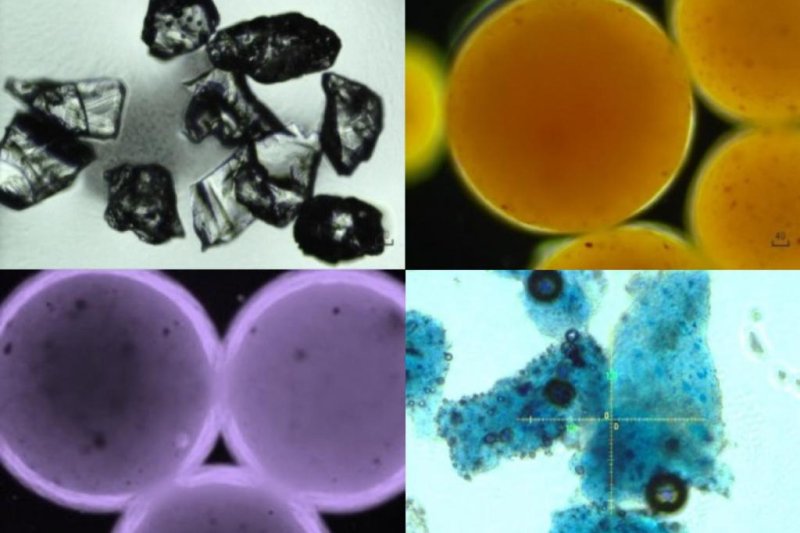Photographs captured using a microscope show different types of microplastic particles found in cosmetic products. Photo by Xiaoguang Duan/Matter
July 31 (UPI) -- Scientists have invented a new tool, tiny magnetic springs, to help break down microplastic pollution in the ocean. The coil-shaped, carbon-based magnets clean polluted water without harming microorganisms, according to researchers in Australia.
"Microplastics adsorb organic and metal contaminants as they travel through water and release these hazardous substances into aquatic organisms when eaten, causing them to accumulate all the way up the food chain," Shaobin Wang, a professor of chemical engineering at the University of Adelaide, said in a news release. "Carbon nanosprings are strong and stable enough to break these microplastics down into compounds that do not pose such a threat to the marine ecosystem."
As dozens of studies have demonstrated, plastic pollution is everywhere: in the deep sea, atop the tallest mountains, inside all kinds of marine species, big and small. While large and medium sized pieces of plastic are common and problematic, tiny bits of plastic are even more ubiquitous and more easily swallowed.
Plastic beads used in a variety of hygiene and cosmetic products are regularly flushed into Earth's waterways, ending up in large bodies of water where they can accumulate and get ingested by a range of marine species. Most filtration systems can't intercept these tiny bits of plastic. Larger pieces of plastic pollution can also be broken down over time, turning what was once a single piece of trash into thousands of tiny pieces of plastic waste.
In an effort to tackle the growing problem, Wang and his colleagues began experimenting with a group of short-lived chemicals called reactive oxygen species. These chemicals spark reactions that slice longer microplastic molecules into small, harmless segments that dissolve in water.
Usually, the production reactive oxygen species requires the use of heavy metals like iron or cobalt, both harmful pollutants. Scientists developed a substitute by coating carbon nanotubes with nitrogen. The nanotubes produced reactive oxygen species without the help of heavy metals. In lab tests, the springs depleted large numbers of microplastics while remaining chemically stable.
The springs' coiled shape both enhanced the nanotubes' stability and increased the surface areas, increasing the odds that the reactive oxygen species intercepted microplastic particles. Scientists also implanted the nanotubes with manganese to enhance their stability. The inclusion granted the springs their magnetism.
Researchers described their invention this week in the journal Matter.
"Having magnetic nanotubes is particularly exciting because this makes it easy to collect them from real wastewater streams for repeated use in environmental remediation," said Xiaoguang Duan, a chemical engineering research fellow at Adelaide.
In followup tests, scientists plan to confirm that the nanotubes can break down all different kinds of microplastic particles. As the cleanup method get perfected, scientists suggest byproducts of the breakdown process could be collected and recycled.
"If plastic contaminants can be repurposed as food for algae growth, it will be a triumph for using biotechnology to solve environmental problems in ways that are both green and cost efficient," Wang said.















